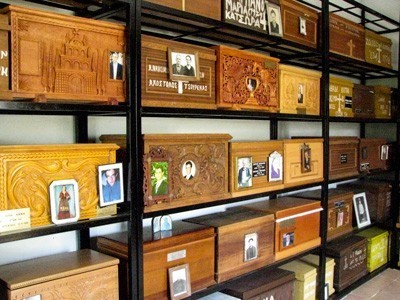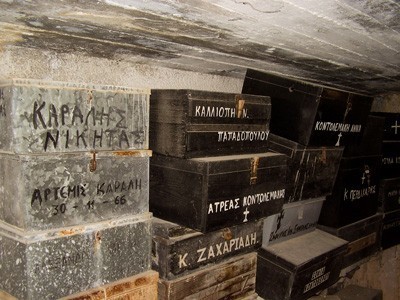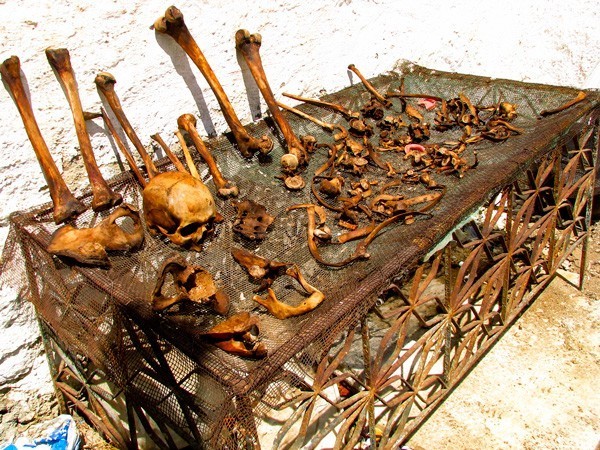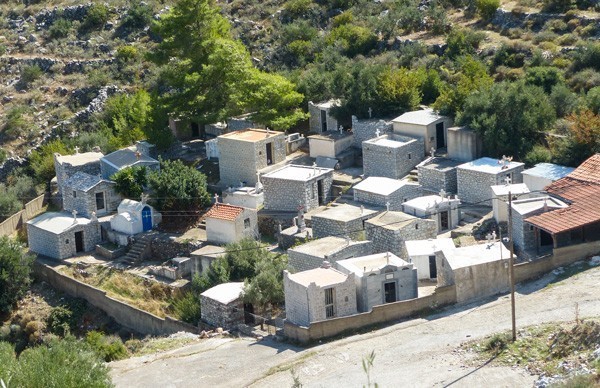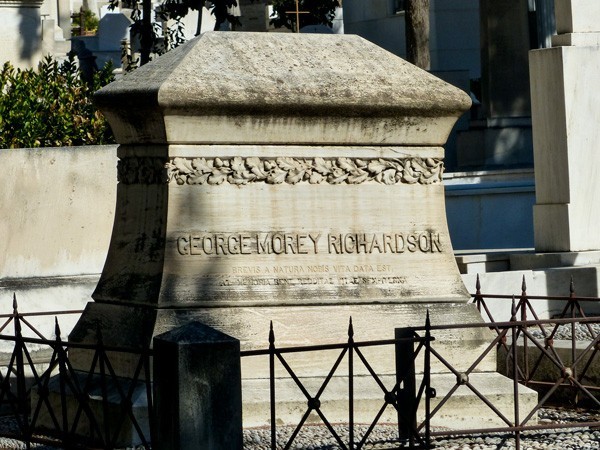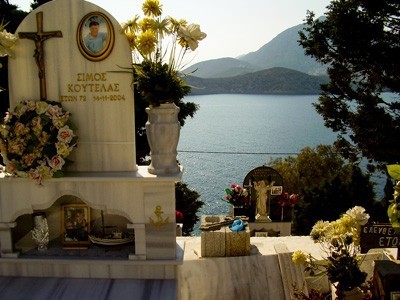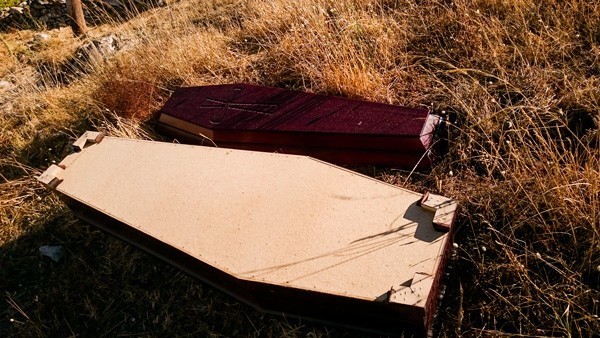A few words about cemeteries in Greece
A few words about cemeteries in Greece
The first day of November is the day in our special culture. That day we go to the cemeteries, to stand at the graves of our loved ones, with the foundation in silence and concentration, to light a candle, to put flowers in mused, to reminisce and to give themselves proof that we remember: after all, as someone wisely said, so long we live, as long It takes memory of us. It is, finally, in our culture a day of reflection and consideration of the passing, the past and the future, reflecting on our lives.
In Greece, the first day of November is not a special day. In this country, in addition to all, a little different from us is approaching the question of graves in which close relatives rest. I will not say definitely that there is no worship in Greece of the grave, but to say that it is much smaller than in our culture.
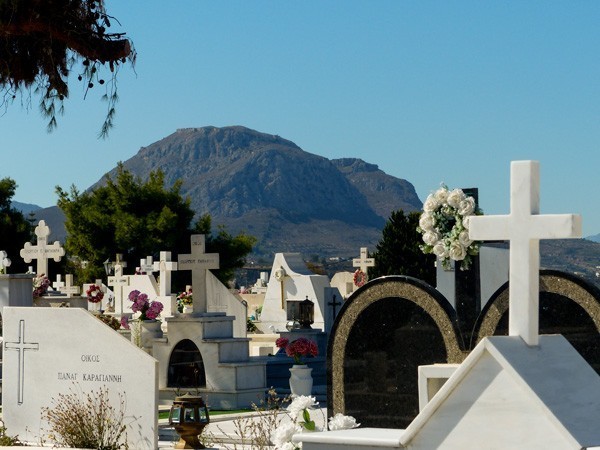
For over twenty years, anywhere in Greece I am – I try to look at the local cemetery. I am not talking about cemeteries such as the first cemetery in Athens, which I have been looking at repeatedly: I am talking about those located in places where I am once and most likely I will not be there anymore. I look at the cemeteries for a number of reasons: I like, I just like cemeteries and I mute them, wyhamowuję what I sometimes need, but I look first of all because cemeteries can tell us a lot about the community in which at the moment Found.
Crossing this Greece from north to south, from east to west-I cemeteries many, very many. I and those in large cities, but in towns and small villages. What wynoszę from such visits is the thought that almost every cemetery has its tragedy, even on such a tiny islet Koufonissi or on an even smaller islet of Thymena, because although it is always too early to die, it is easier for us to understand the departure of the older A man than a small child, a teenager, or a young man entering into the life… Stop longer at such graves and sometimes someone go… Tell…
How about this teenage Kamil from the island of Folegandros, who climbed the car with his colleague, who did not inhibit the port and entered straight to the sea…
How about this 22-year-old Emanuel from the islet of Fourni, about which someone in the village tells me: „Stupid was: Przedawkowała”…..

How about an adult already, but a young athlete from the island of Patmos, who, as a player titled and Champion in his class, treated the road of the island as a motorcycle track and driving his motorcycle with breakneck speed-perished…
And in the Greek cemeteries can not be so rare to see the tombs, where we immediately know that they rest in them victims of a motorcycle accident: Often the tombstone is a sculpture or a monument in the shape of a motorcycle.
A typical and often common one is to put something on the grave that shows what the deceased lived in life: it can be a drawing of a boat or a ship in the case of a fisherman or a sailor, and there may be some musical instrument in the case of music.
 |
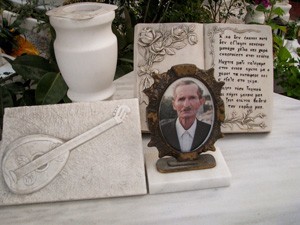 |
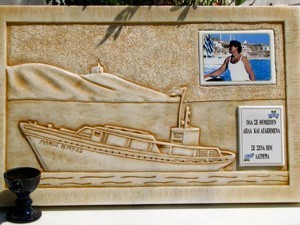 |
| Funeral elements for the profession of deceased | ||
The tombs of children often distinguish complex toys: sometimes there are so many that cover the whole plate. In the case of adolescents, the flag of sports clubs or other gadgets in club colours, and the balls are not rare.

Although I look at these Greek cemeteries for so many years, something is still surprising.
I can not understand why the bones found dead (including the whole skull) are not hidden into some boxes or casket, and stand on the shelves in small, located in cemeteries, buildings called in Greece Osteofilakio („House of Bones” , ossuary), which przyrównałabym to our morgue. If they stand on the shelf it’s smaller for me Zbeszczeszczenie, but if they are knocking on the floor or even better: around ossuary-understanding me lack completely.
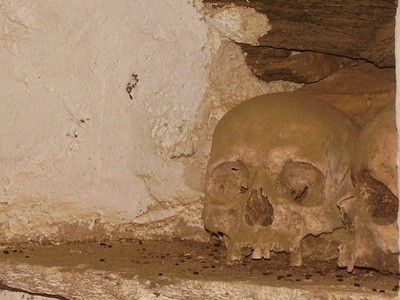 |
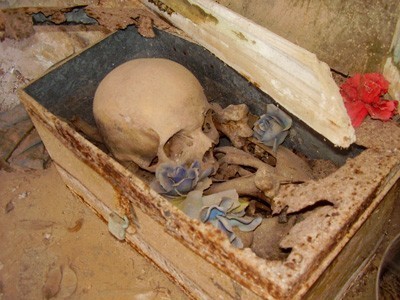 |
| In cemeteries (left to right): on Ikaria Island and on Folegandros | |
Usually in Ossuariach there is Order (although there are exceptions): There are small, decorated more or less, skrzyneczki of various types, whose contents are human remains.
In Greece, due to the lack of space, but the peculiarities in the construction of the site and its mountainism, after 3-4 years from the funeral is made exhumation and the remains are stored in such skrzyneczkach. Very often on skrzyneczkę is a photograph of the deceased: most of them probably, however, black and white photographs, sometimes already przyżółcone, with powyginanymi horns. In some skrzyneczkachs burn small lampeczki: such as batteries or olive. Similar pictures are placed in the glass cabinets on the graves. I love to watch this tombstone or naskrzyneczkowym photography: These pictures taken from the family album are so beautiful. I am delighted to look at all these old, not infrequently in black chustkachs on the head, or with the wrinkles of the faces of the old Greeks: these pictures ordinary and yet extraordinary!
 |
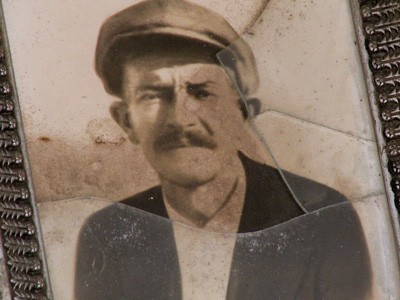 |
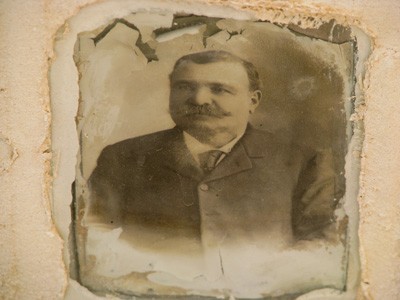 |
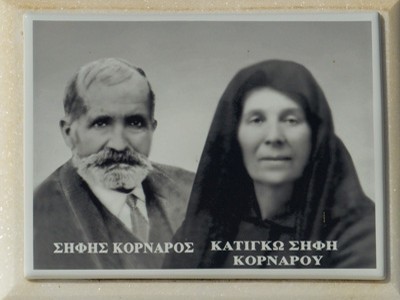 |
| On the Island Cemeteries: 1/Thymena; 2/Anafi, 3/. Anafi and 4/. In Corinth | |
In many cemeteries we can see the family, private buildings, which ossuaries function.
 |
 |
| Family ossuary on Anafi Island | |
Rarely I tombstones other than white, and by the ubiquitous whites in the cemeteries, any colored decoration or other than a white tombstone until causes.
It happens to me that sometimes I leave the village or the island and do not ask for something that I think, and then my thoughts come back over the years to such places. This happened on the island of Donoussa, where in the village of Mersin I found a lone tomb outside the Cmentarzyka area. To this day, I’m only guessing about this difference, and I could ask.
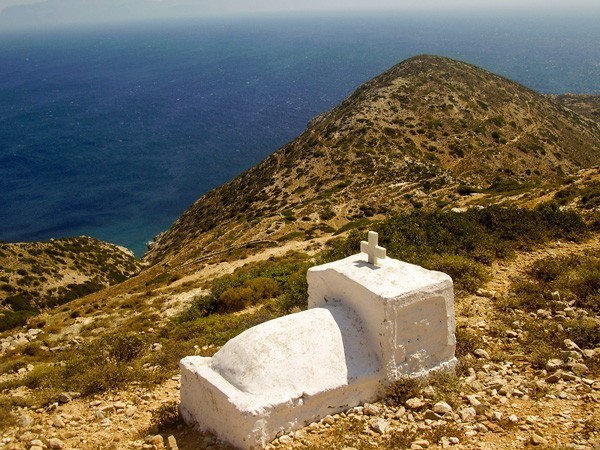
There is no way to mention though in a small range about those cemeteries located in Greece that have a relationship with our country. I know that one of them (Catholic) is located in the city of Rethymnon in Crete: The Polish soldiers rest here and the second is a cemetery of Wehrmacht soldiers located in the mountains between the villages of Nea macros and Dionisos, where rested many Poles, the strength Annexed to the Army. But I was not at any of these cemeteries. In several cemeteries in Greece there are graves of deserving people and for Poland and Greece, including, among others, the tomb of Zygmunt Mineyko in the first cemetery in Athens, in the cemetery of the Athenian district of Jerzy Szajnowicza-Ivanov, and on the British The military cemetery in Soudzie, Crete, is the grave of Janusz Zbyszyńskiego. I after these Greek cemeteries I make a time to discover, about, as on the island of Syros, in Ermoupolis: Here at the time I found the whole cmentarną street, which was decorated, so one after the other, until Three cemeteries: Orthodox, British and Catholic, or different in the first cemetery in Athens: Almost in the middle of a fenced part constituting the Protestant cemetery.
I to these Greek cemeteries and I The tombstones: many of them are not special, but many have to stop. Most of these are located at the first cemetery in Athens (to him, as one of my places in the city, but will a separate story): Some of the Tombstones are surprisingly beautiful – these are true works of art. The cemetery of Syros (Ermoupolis) and Andros (city) is also what to admire.

All photos: Betas.



